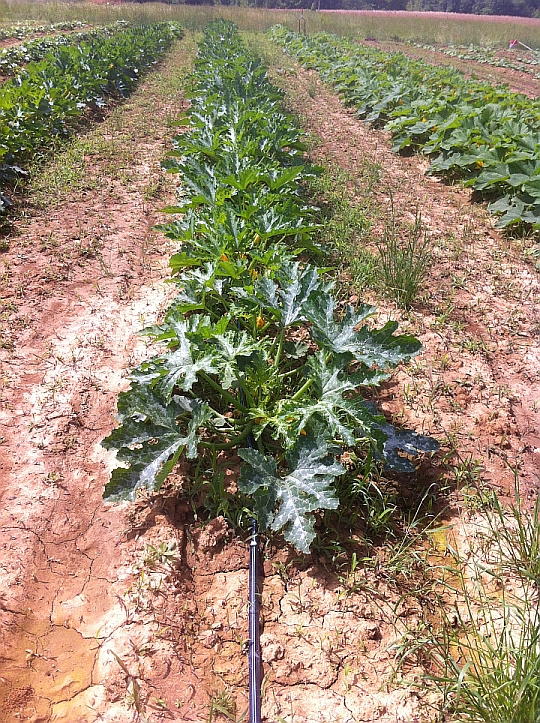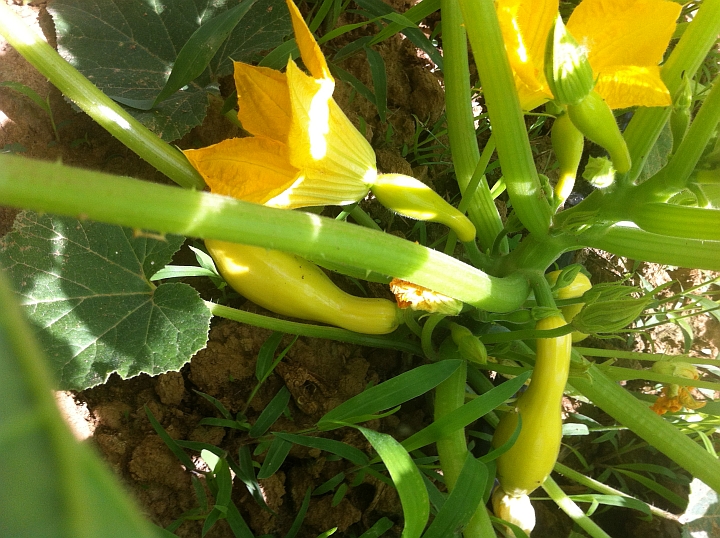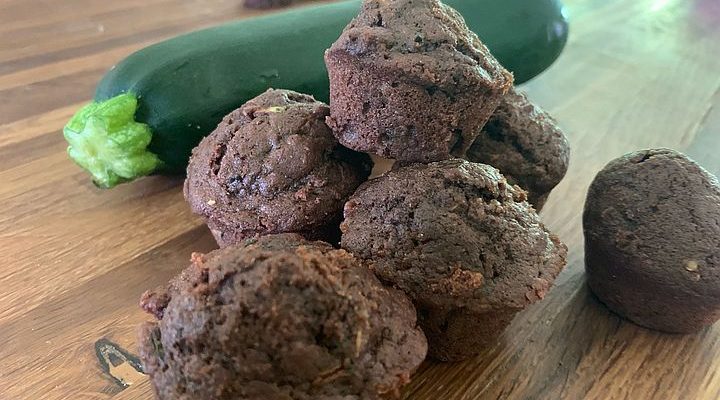Although the official start of summer is still weeks away, this is the last week of spring at Tubby Creek Farm (that’s right, we make our own rules!). We want to thank all of our CSA members for supporting us through this challenging spring season. As you may recall, it was cold and crazy wet, setting us back three weeks in starting spring planting. We were only able to plant about half of what we had planned but somehow we pulled through and only missed one week of the CSA. This was a season where the “sharing the risks” part of the CSA was pretty apparent. We didn’t plan to give the CSA so much lettuce, kale, radishes and turnips, but that is what we had so that is what you got! New crops are coming in now and soon the boxes will look completely different. It all starts with the arrival of squash.
 Squash & Zucchin is famous for being prolific. Garrison Keeler has joked that the only time the residents of Lake Wobegon lock their car doors is during zucchini season, lest they come out of church to find that someone has left a bag of zucchini waiting on their car seat. In her book, Animal, Vegetable Miracle Barbara Kingsolver writes that she used to think that was a joke until one day during squash season when she came home to find a bag of zucchini swinging from the mailbox. This while she was plotting to unload a bumper squash harvest of her own.
Squash & Zucchin is famous for being prolific. Garrison Keeler has joked that the only time the residents of Lake Wobegon lock their car doors is during zucchini season, lest they come out of church to find that someone has left a bag of zucchini waiting on their car seat. In her book, Animal, Vegetable Miracle Barbara Kingsolver writes that she used to think that was a joke until one day during squash season when she came home to find a bag of zucchini swinging from the mailbox. This while she was plotting to unload a bumper squash harvest of her own.
Humorous anecdotes such as these make me a little jealous and sad. Summer squash is difficult to grow without synthetic chemicals in the south due to two especially pernicious pests; squash vine borers and squash bugs. Longer maturing cucurbits like pumpkins and most winter squash are all but impossible. I spent four years at GrowMemphis trying to convince community gardeners not to grow squash. I am afraid of jinxing myself but I will say it anyway; we do not have the vine borers at the farm. I think it is the only regional pest that has not turned up. This makes growing squash theoretically possible.
In fact, it looks like we are headed for a bumper crop of squash. Our first bumper crop of the year, and an unexpected one at that. While we can take full credit for some (but not all!) of our failures, I think farmers can take no more than 50% of the credit for their successes. The rest is just luck. After trying new squash varieties every year, it looks like we have finally found some winners. We have started spacing them closer together to get more plants in a bed. I saw a few squash bugs and even some eggs while I was picking, but we should have a couple weeks before that becomes a serious problem. But really, the squash are just growing better for reasons unknown and unknowable. To my point – we have two rows of yellow squash growing right next to each other. Same seeds, same fertilizer, planted on the same day. Yet one row has noticeably larger plants. Why? We will never know.
It’s not all sunshine and daisies. The peach trees are big enough this year to support a crop of peaches. Chris and Randy lovingly pruned them and we had loads of blossoms. Yet, out of a dozen trees we counted a grand total of 2 peaches. Two individual peaches. Oh yeah, the tractor is broke again, too.
What the heck is a kohlrabi?
This explanation comes a bit late because full share members got theirs last week. Perhaps it is still sitting in your refrigerator, pushed to the back. The first thing you need to know is that kohlrabi is delicious. The second thing you need to know is that you need to peel it. The skin is too fibrous to eat. Folks often mistake it for a root vegetable but that bulbous sputnik is actually the stem. It is crisp and sweet. I describe it as the flavor of cabbage with the texture of a turnip, but that doesn’t really do it justice. It is wonderful raw (I have been known to peel kohlrabi the field with my harvest knife and eat it like an apple) and equally good cooked. Cousin to the cabbage, it can be grated or chopped into slaw. It is also fabulous in stir fry or braised with other vegetables. The leaves are delicious cooked as well, but I recommend removing the stem and treating like mature collards. That is, stew them in a little broth or blanch them in boiling water for a few minutes before drying and sauteing. They require a little more time to cook than kale.
Tis’ the Season, Squash Season




